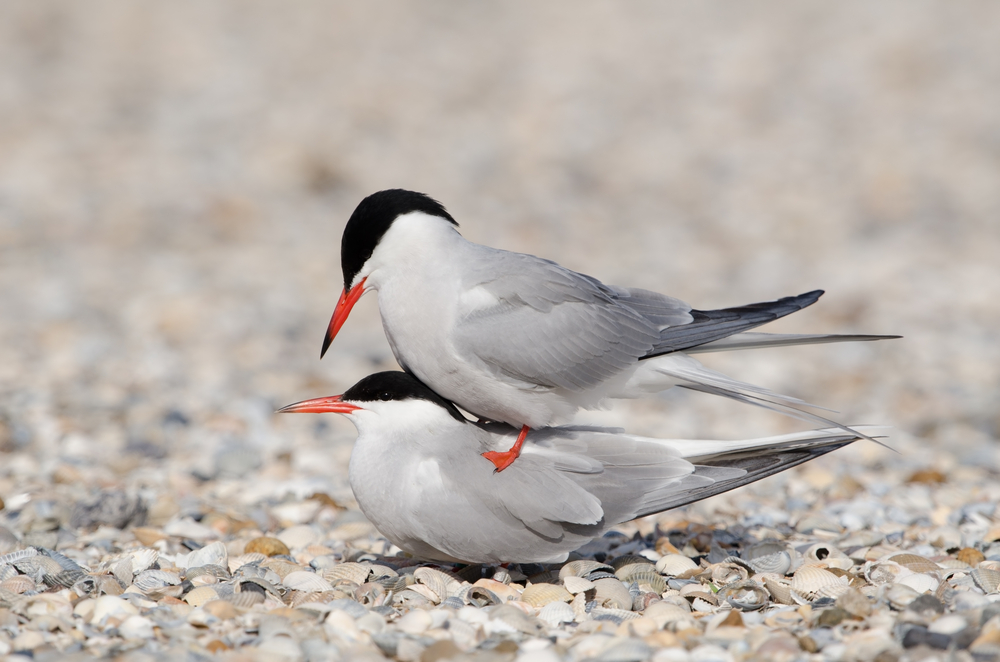
Think you love someone? Want to spend the rest of your life with them and raise lots and lots of cute kids? Sorry, that might be exactly what your genes want you to think. Monogamy is a strategy, and for species where the young are vulnerable or take a long time to mature then it’s quite a good strategy to have.
But although we think of animals pairing up as quite common in the natural world, science is now showing us that many species may be far from faithful. In these cases, the only thing better than monogamy is to break all the rules, and get away with it. Here are a few of the world’s recently revealed animal cheats.
1. Wandering Albatross

With the largest wingspan of any bird (3.5m) these birds are well adapted to wandering the Southern Ocean, sometimes for years at a time. At maturity, these albatross court a member of the opposite sex with wings outstretched and a clapping beak pointed skywards.
This impressive display appears to cement their bond for life, but recent genetic evidence has shown that as many as 18% of chicks had a different father. It’s hypothesised that although males may be raising the odd chick that isn’t theirs, in the meantime they have probably been playing away with other females too. In a similar way to a certain well-known mammal, much of this ‘extra-pair copulation’ appears to happen while the real father is out at sea feeding.
2. Song Sparrows

Up until recently it was thought that over 90% of birds were monogamous. Much of the research that has blown our ideas about avian relationships to pieces has come from a famous population of song sparrows (Melospiza melodia) living on the tiny Mandarte Island, British Columbia, Canada.
Scientists have followed every sparrow alive on the island since 1975. If you put together all that research, it turns out that 28% of offspring have a father other than their mother’s social mate. Even more curious, is that unfaithful behaviours appears to be hereditary down the generations.
3. Gibbon

In contrast to birds, monogamy is quite rare in mammals, occurring little over 10% of the time. Among the most faithful are the elegant gibbons of South East Asia, but the reasons may not be quite as romantic as you think. Recent research suggests that it has evolved as a mechanism to protect a male’s offspring. While female primates breastfeed they aren’t fertile, if another male can kill the offspring, then he will be able to mate sooner. So monogamous behaviour may have evolved as a way for a father to hang around and protect his offspring from other marauding males.
So far so good, but here comes the twist. While we thought of Gibbons as textbook parents, studies in the field have now shown that long-term gibbon couples can break up and even ‘divorce’ if a better mate becomes available. And why wouldn’t you—the name of the game is to successfully produce offspring.
4. Cichlid fish

Perhaps the weirdest example of monogamy is secret pairing in the Lake Tanganyika cichlid fish Xenotilapia rotundiventralis (it doesn’t seem to have a more catchy common name). Not only is it one of the first fish known to practice monogamy, but it’s the first species to do it without physical proximity. In layman’s terms, these species live in vast schools of thousands of fish, and that means that they are no more likely to be next to their partner than any other fish in the school.
In fact it has remained undiscovered for so long because it has been so challenging to tell the fish apart. It is only with the advent of genomic technology that researchers discovered that when these fish practice mouthbrooding (holding the fry in the mouth for protection), they almost always manage to find the genetic father and pass the young on to him. How they manage it is a mystery, but with more time, there’s a chance we’ll find some cheats in this species too.
All in all, it seems like we’re only scratching the surface of complex animals relationships. Perhaps humans aren’t so complicated after all.
